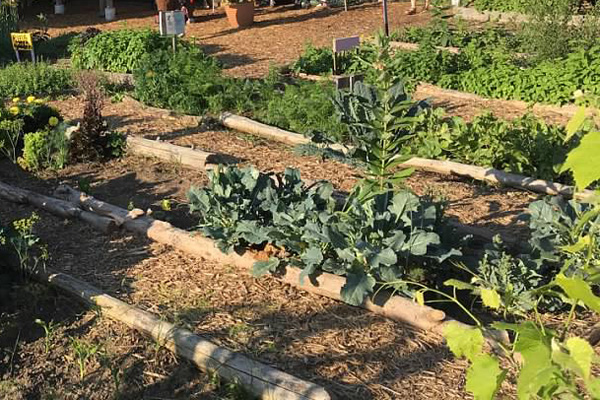Getting The City Blooming To Work
Getting The City Blooming To Work
Blog Article
Some Known Questions About City Blooming.
Table of ContentsThe Facts About City Blooming RevealedExamine This Report on City BloomingCity Blooming - QuestionsLittle Known Facts About City Blooming.8 Simple Techniques For City Blooming
Interested in expanding food for sale in the City of Chicago? Below is a listing of regularly asked concerns relating to the rules and guidelines that growers need to think about when planning a city farming project.
The zoning change does not modify any type of various other codes handling composting, building authorizations, purchasing or leasing City owned residential property, business licenses or ecological contamination. There are existing codes that regulate these problems and they stay in full result and may apply to your task. Community yards are commonly owned or managed by public entities, civic organizations or community-based companies and kept by volunteers.
Urban ranches expand food that is intended to be sold, either on a not-for-profit or for-profit basis. Due to their business objective, city ranches call for a business license.
The Best Strategy To Use For City Blooming
The amount of compost product can not exceed 25 cubic backyards at any type of offered time according to the standards in 7-28-715 of the City's Municipal Code. Due to the fact that the soil at the majority of new garden websites needs changing, compost, dirt, timber chips, or other products can be gotten to construct or boost the growing room.
:max_bytes(150000):strip_icc()/womanonrooftopurbangarden-7fffbb3897ac48f390d94b9545d4d082.jpg)
If a structure license is called for after that the hoophouse will be considered an accessory structure. You can discover even more regarding the building permit demands by calling the Division of Buildings. The 25,000-square-foot dimension limit is meant to stop a solitary community yard from controling an offered block or diminishing the block's existing property or industrial personality.
The limit does not use to gardens found in Public Open Room (POS) areas. Can there be even more than one neighborhood yard that is 25,000 square feet on a solitary block? Yes. The dimension limitation puts on specific gardens, not to specific blocks. No. Fence is not called for, nonetheless, yards that have big car park locations may be called for to install fence or other landscaping functions.
Getting My City Blooming To Work
B1 & B2 areas require that all industrial use tasks be performed indoors. R areas restrict business task. The laws mirror the function and intent of the Zoning Code. Is fencing needed for city ranches? Yes. Fences may be called for, together with landscaping and screening, for sure auto parking areas and exterior job or storage areas relying on location and the specific task taking location.
Yes. Urban farms require building authorizations and zoning authorizations before building and construction. Other kinds of city review may be called for depending upon certain structures, activities, size, landscape design, licensing, public heath and stormwater management problems. Much of these requirements are recognized in the task style or allowing process, nonetheless, the candidate may be accountable to individually determine certain licenses or allows that might be required.
Yes. The sort of certificate is identified by what is happening at the website. The Department of Company Affairs and Consumer Security can aid establish the specific kind of business permit that's required. Yes. Off road auto parking is needed for the majority of commercial jobs in Chicago. The called for variety of garage is based upon the number of staff members working on site and not the square video footage of the growing area.
The 45-Second Trick For City Blooming

Yes. A metropolitan farm can market garden compost product created on website, however, the procedure has to abide with the guidelines in 7-28-715 of the Chicago Municipal Code. Yes. Aquaponic systems are allowed inside on city farms in numerous zoning areas. A zoning review and building authorization is called for in order to mount structures or systems and additional hints a business certificate is required as explained over.
As much as five hives or colonies of honey bees may be kept as an accessory usage. Beekeepers have to register with the Illinois Department of Agriculture. To learn more concerning the recommended zoning modification you may get in touch with the Department of Housing and Economic Development, Bureau of Preparation and Zoning at 312.744.8563.
Farming in cities and metropolitan locations A city farm in Chicago. Urban farming describes different techniques of growing. https://triberr.com/cityblooming, processing, and dispersing food in urban locations. The term likewise applies to the area activities of animal husbandry, tank farming, beekeeping, and gardening in a city context. Urban agriculture is differentiated from peri-urban agriculture, which takes area in country areas beside residential areas.
What Does City Blooming Do?
, that seek to develop social networks started on a common principles of nature and neighborhood holism. These networks can create by way of official institutional assistance, coming to be incorporated into regional community planning as a "change town" movement for lasting metropolitan development.
Some of the first evidence of urban agriculture comes from Mesopotamia.
Report this page